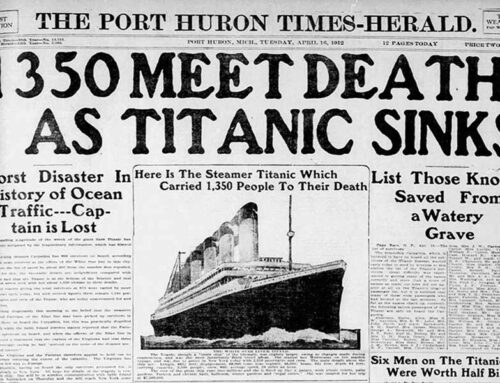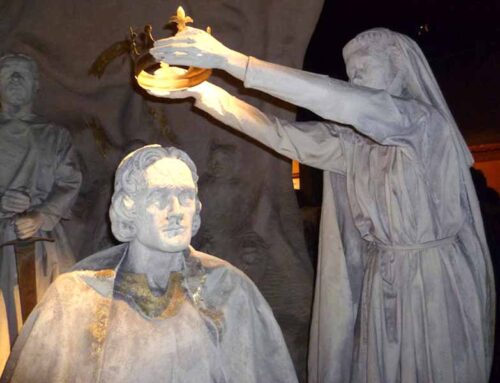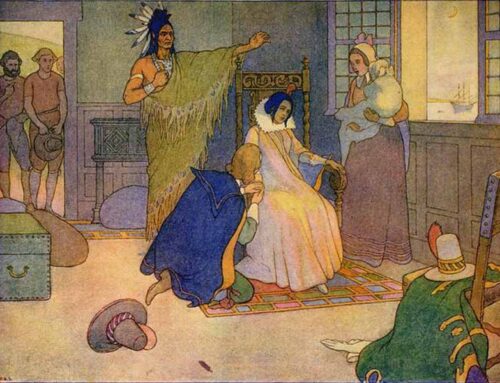
“Greater love hath no man than this, that a man lay down his life for his friends.”—John 15:13
The Sinking of the HMS Birkenhead,
February 26, 1852
![]() here was a time not so long ago in this country where, if a woman or child found themselves in less than ideal surroundings, they might look around and find with some ease an assortment of fellas that could be counted on were their situation to go sour. It’s long been a mark of Christian cultures that the welfare of the weaker is the duty and diligence of the stronger, that a stranger’s plight is not considered a remote burden for those possessing the capability to aid it.
here was a time not so long ago in this country where, if a woman or child found themselves in less than ideal surroundings, they might look around and find with some ease an assortment of fellas that could be counted on were their situation to go sour. It’s long been a mark of Christian cultures that the welfare of the weaker is the duty and diligence of the stronger, that a stranger’s plight is not considered a remote burden for those possessing the capability to aid it.
This grounding quality of culture has not been entirely lost to us, but it has been diluted to such a degree that when studying certain portions of history, the willing choices and resolute sacrifices made therein appear almost fantastical. Such bravery is the legacy and conduct of the men and women aboard the doomed troopship, HMS Birkenhead.
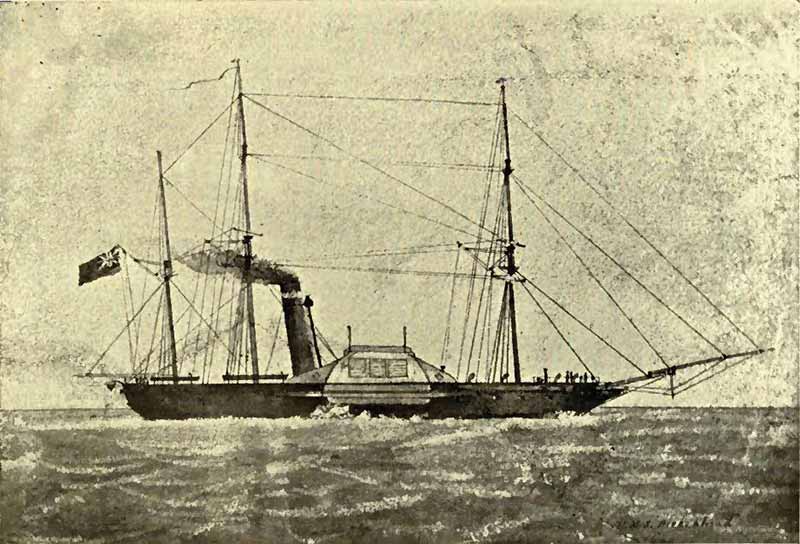
The HMS Birkenhead
The year was 1852: Queen Victoria had been reigning for fifteen years over the British Empire, a massive and sprawling landmass of rich assets and varied people groups requiring the presence of troops to ensure governance. HMS Birkenhead was commissioned to carry many of these soldiers and their accompanying families bound for South Africa’s Cape of Good Hope, Britain’s many incursions there having escalated to all-out war and reinforcements were needed. HMS Birkenhead weighed 1400 tons and was the Royal Navy’s first iron steamer with a state-of-the-art paddle wheel that gained her record speeds.
The first set of troops embarked from Portsmouth and then the ship stopped at Cork in Ireland, picking up more men who perhaps best resembled the sort who found themselves wearing the British uniform. They were men without prospects in famine-riddled Ireland, and found the most lucrative employ to be that in Her Majesty’s army as it supplied wages that could provide for a family and the benefit of some social standing. Often the aspirations of empire were not fervently espoused by the very men sent to enforce them, but the common tenants of their shared upbringing which emphasized good character, loyalty, and unwavering discipline, made them into one of the most effective and typically gallant fighting forces in the world.
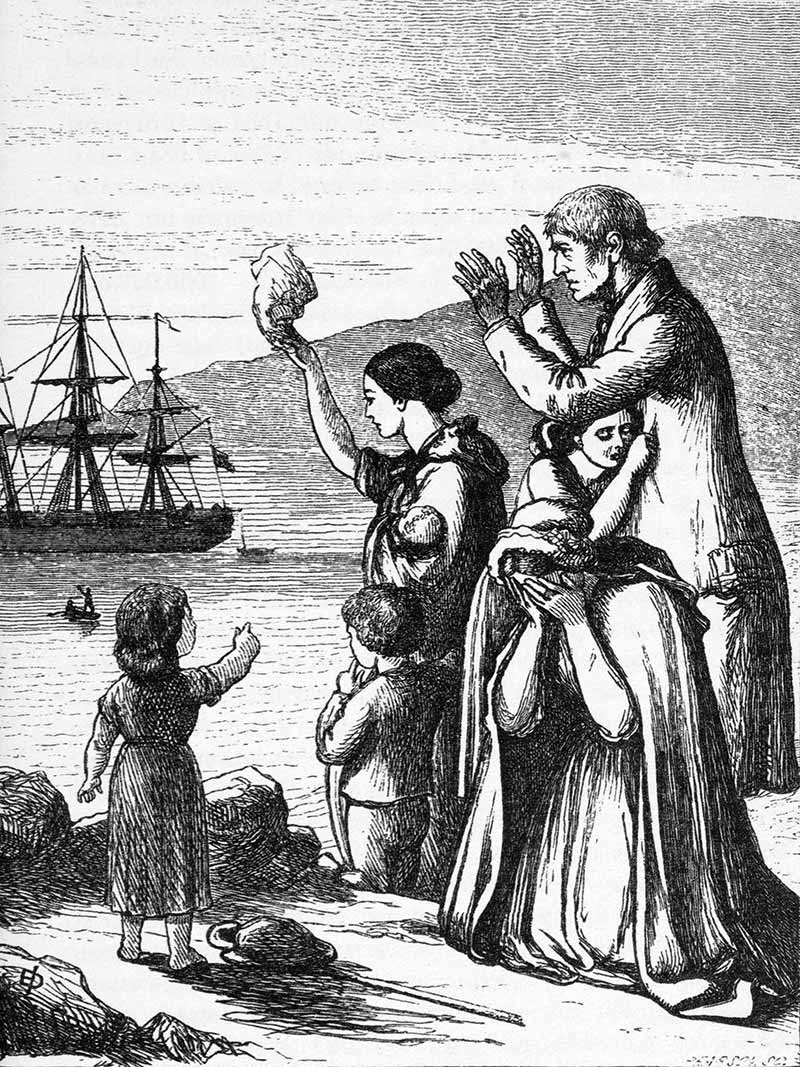
Friends and family say farewell to emigrants leaving Ireland during The Great Famine of 1845-1852
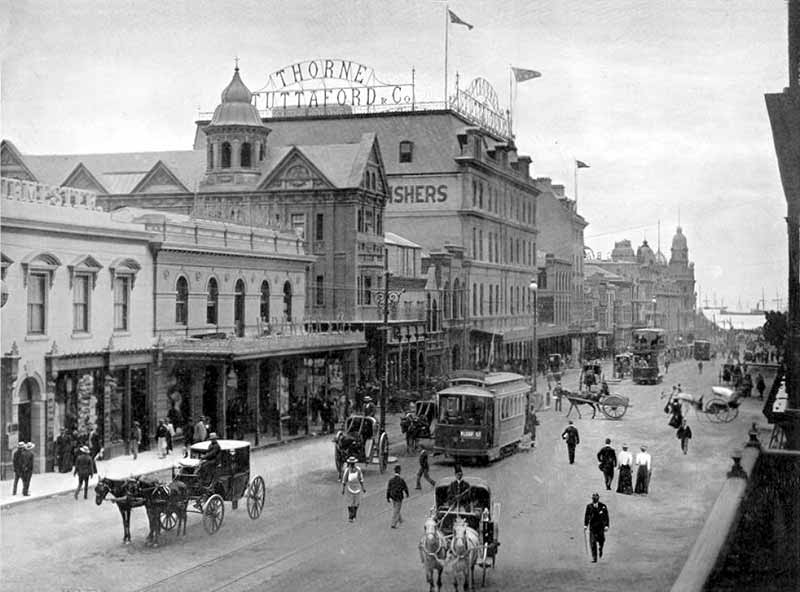
Adderley Street in Cape Town, South Africa as it appeared in 1897
On February 23 a large component of the troop, their wives, children and provisions, disembarked near Cape Town. The remainder stayed aboard HMS Birkenhead as it steamed round the cape of South Africa, hugging the coastline and making its way to Algoa Bay and their intended destination.
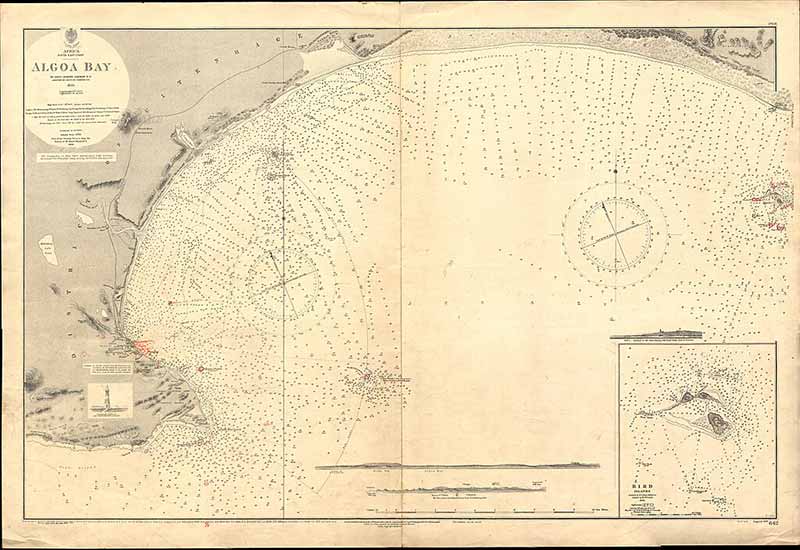
An 1856 map of Algoa Bay, the intended destination of the ill-fated HMS Birkenhead
In the dead calm of a pitch dark morning on the 26th of February, the Birkenhead struck an uncharted rock off Danger Point at such speed it instantly tore the iron hull apart. Water flooded the lower compartments in seconds, trapping and drowning those bunked there. The damage and the impact of the wreck were evident to even the most safely situated passengers, the men hastily readied their families and rushed them to the deck, finding hordes of lone soldiers already up there receiving orders from Captain Salmond to begin emergency measures as the ship was sinking.
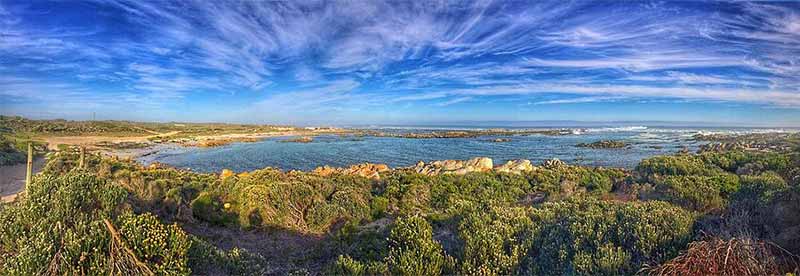
The coast of Gansbaai, South Africa, near where the Birkenhead was wrecked
Despite having offloaded a substantial number of passengers at Cape Town earlier, the all-too-familiar predicament of limited lifeboats arose, and not a single life vest was to be found. There were some 630 people aboard the Birkenhead—the exact number is not known since the ship’s manifests were lost in the wreck—with only 26 of them being women and children. Compared to such grand and comparatively lengthy maritime disasters as that of the Titanic or the Lusitania, these numbers seem easily surmountable, but it was the speed with which the Birkenhead sank that made its tragedy so dire and the corresponding sacrifice of her men so necessary.
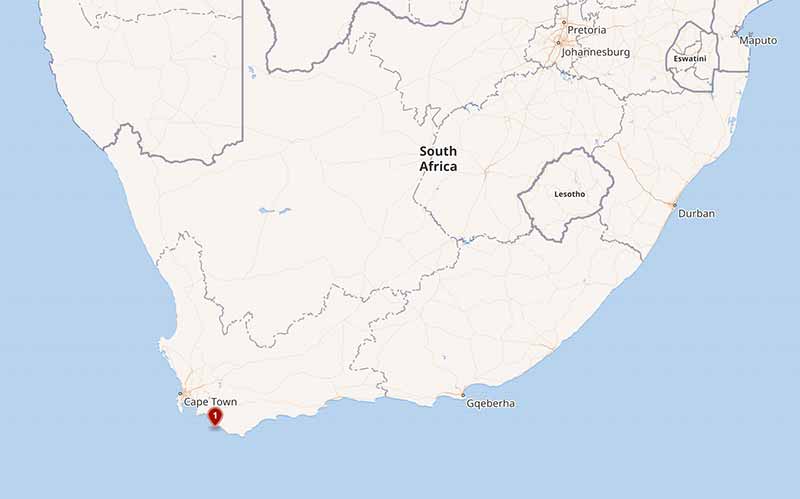
The precise location of the Birkenhead wreck off the coast of South Africa
Famously now, the order was given for the men to form ranks on the slanting, shuddering deck and the call of “women and children first” was given, establishing for the first time the “official” great maritime protocol. Form ranks they did—hundreds of her Majesty’s best men, in the prime of their life and at the height of their vigor, they kept order and decorum as their women and children were lowered away to safety in the largest and most serviceable of the lifeboats.
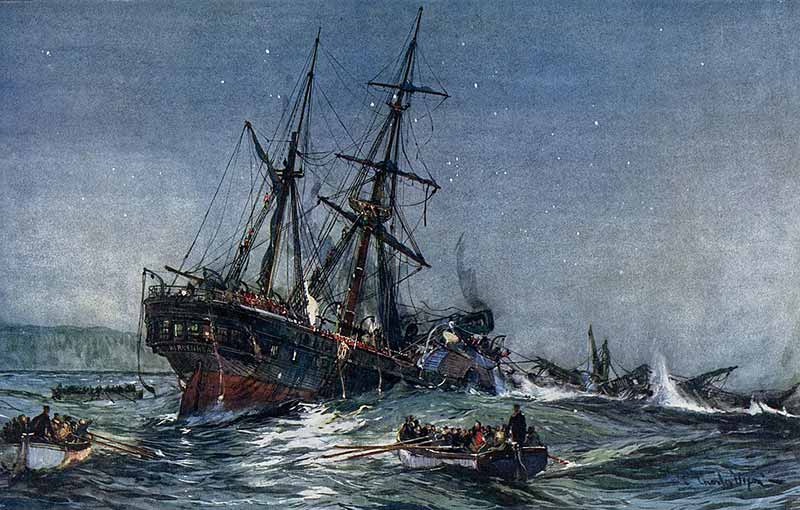
An artist’s depiction of the wreck of the Birkenhead
“Almost everybody kept silent, indeed nothing was heard, but the kicking of the horses and the orders of (Captain) Salmond, all given in a clear firm voice.”—survivor Ensign G.A. Lucas
All of this done and the boats rowed to safety out of harm’s way from the suction of the sinking ship, Captain Salmond gave the order of “every man for himself”. The shore was less than two miles away, but while the weather was clement and the sea somewhat calm, shark-infested waters waited for each man who stood his ground till the deck was awash. A mere twenty-five minutes elapsed from the initial collision to the full submersion of the giant vessel.

A great white shark, photographed in the same waters as those in which the Birkenhead went down
Counteracting Captain Salmond’s encouragement to make their way to the lifeboats and save themselves was Lieutenant-Colonel Seton, a 38-year-old Scotsman and the soldier’s commanding officer. He recognized that such a rush would mean that the lifeboats could be swamped and the lives of the women and children onboard would be endangered. He drew his sword and ordered his men to stand fast. The untried soldiers remained at their post even as the ship began to split in two.
“The order and regularity that prevailed on board, from the moment the ship struck till she totally disappeared, far exceeded anything that I had thought could be effected by the best discipline… Everyone did as he was directed and there was not a murmur or cry amongst them until the ship made her final plunge—all received their orders and carried them out as if they were embarking instead of going to the bottom.”— survivor Captain Edward Wright, 91st Regiment (Argyllshire Highlanders)
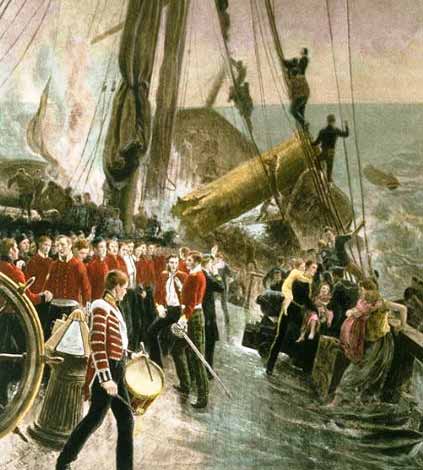
The calm, orderly scene on deck as the Birkenhead went down
A young ensign named Alexander Russell had been put in charge of the largest of the lifeboats. Once the Birkenhead had sunk and a scene of mass death surrounded them, he found himself beseeched by the wives and children of the men in his care to row back to the site and help rescue any who might be helped. Reluctantly he did so, but despite pandemonium, horror, and a frenzy of fins churning the water, not a man dared endanger the small vessel by clinging to it. Ensign Russell himself was so moved when one family recognized their father amongst the carnage that he dove over the side to aid the struggling man and perished himself, taken by the sharks.
“Oh that I could forget what I saw that night. I would not pass such another. It was an awful sight to see despairing men fighting for anything to support them in the water.”—survivor Ensign G.A. Lucas
Later that morning the schooner Lioness reached the lifeboats and rescued the women and children. She then headed for the scene of the disaster and reached the site of the wreck that afternoon. Mercifully the same shallow shoals which had wrecked the Birkenhead kept her mainmast and rigging above the waterline as she settled down to the seabed, and clinging to it were forty men who had endured the harrowing night.
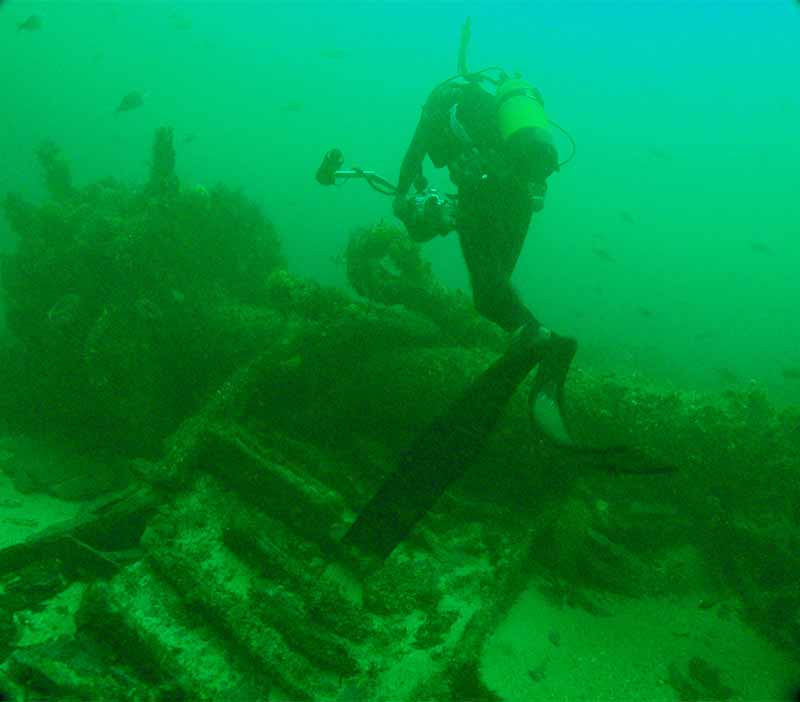
A diver examines and records the remains of the Birkenhead’s paddle during a dive to the wreck site in 2011
A few successfully made it the two miles to shore by swimming, clinging to overturned lifeboats or using makeshift rafts of broken boards. Once ashore, those exhausted and battered men had to trek for miles in South Africa’s hottest month of the year in search of water and help. But still they showed selflessness: men who had been swimming for hours helped carry their fellows too maimed by sharks or shoal to walk. No one, once found, was to be abandoned and eventually it was Dutch farmers who welcomed them and gave them shelter.
Of the more than 630 people onboard the Birkenhead, only 193 were saved, but none of those who perished were women or children. There is a code of conduct now thus named: The Birkenhead Drill—more recognizable perhaps as the strict prioritizing of “women and children first!” during times of crises. The chivalry which became famous on the Titanic half a century later had its roots in the conduct of these men who had been the role models of the men aboard her. Such character does not grow in isolation or spring from the necessity of the moment. These were men ready to die in the rush of a fight, but found the sacrifice required of them to be of a far more chilling sort—and they made it without complaint.
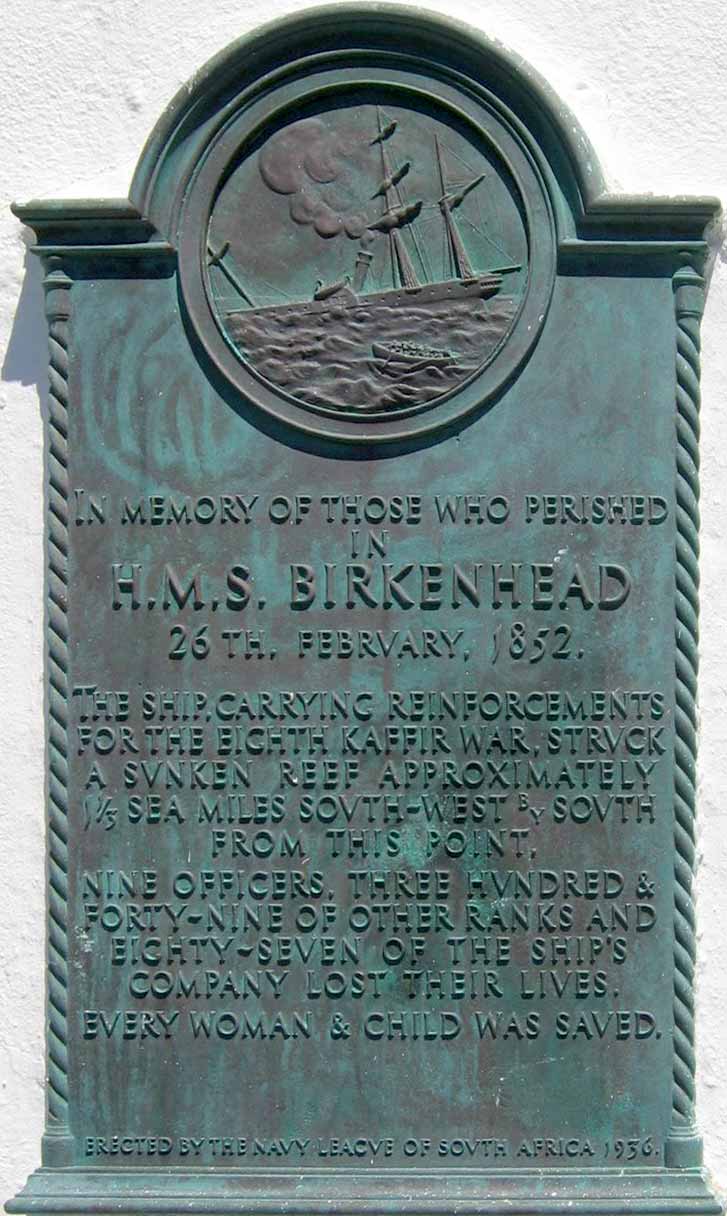
A bronze memorial plaque to the brave men of the Birkenhead, located on the side of the Danger Point lighthouse, just off the coast of Gansbaai, South Africa, near the site of the wreck
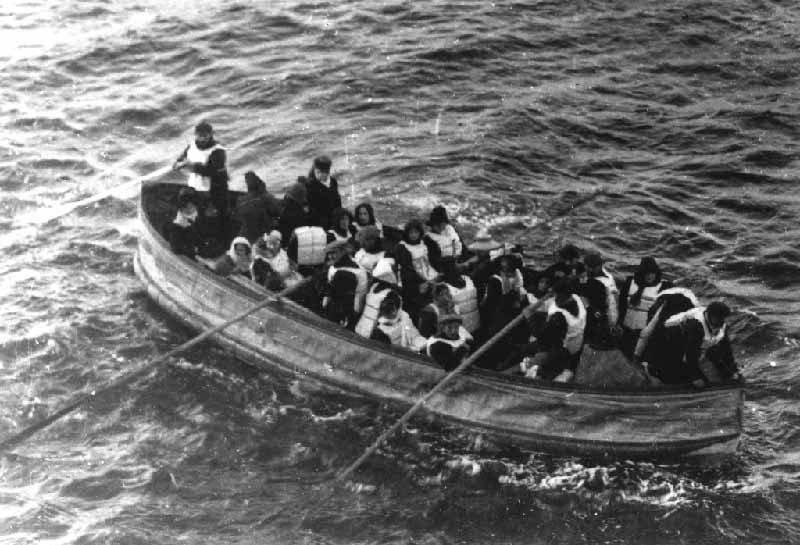
One of Titanic’s lifeboats, loaded with women and children
Rudyard Kipling immortalized the silent heroes in common vernacular when he wrote:
“To take your chance in the thick of a rush, with firing all about,
Is nothing so bad when you’ve cover to ’and, an’ leave an’ likin’ to shout;
But to stand an’ be still to the Birken’ead drill is a damn tough bullet to chew,
An’ they done it, the Jollies—’Er Majesty’s Jollies—soldier an’ sailor too!
Their work was done when it ’adn’t begun; they was younger nor me an’ you;
Their choice it was plain between drownin’ in ’eaps an’ bein’ mopped by the screw,
So they stood an’ was still to the Birken’ead drill, soldier an’ sailor too!”
Image Credits: 1 HMS Birkenhead (wikipedia.org) 2 Irish emigrants (wikipedia.org) 3 Cape Town, 1897 (wikipedia.org) 4 Algoa Bay (wikipedia.org) 5 Gansbaai Coast (wikipedia.org) 6 Site of wreck (wikipedia.org) 7 The Birkenhead goes down (wikipedia.org) 8 Great white shark (wikipedia.org) 9 On the deck of the Birkenhead (wikipedia.org) 10 Diver at wreck site (wikipedia.org) 11 Memorial plaque (wikipedia.org) 12 Titanic lifeboat (wikipedia.org)



